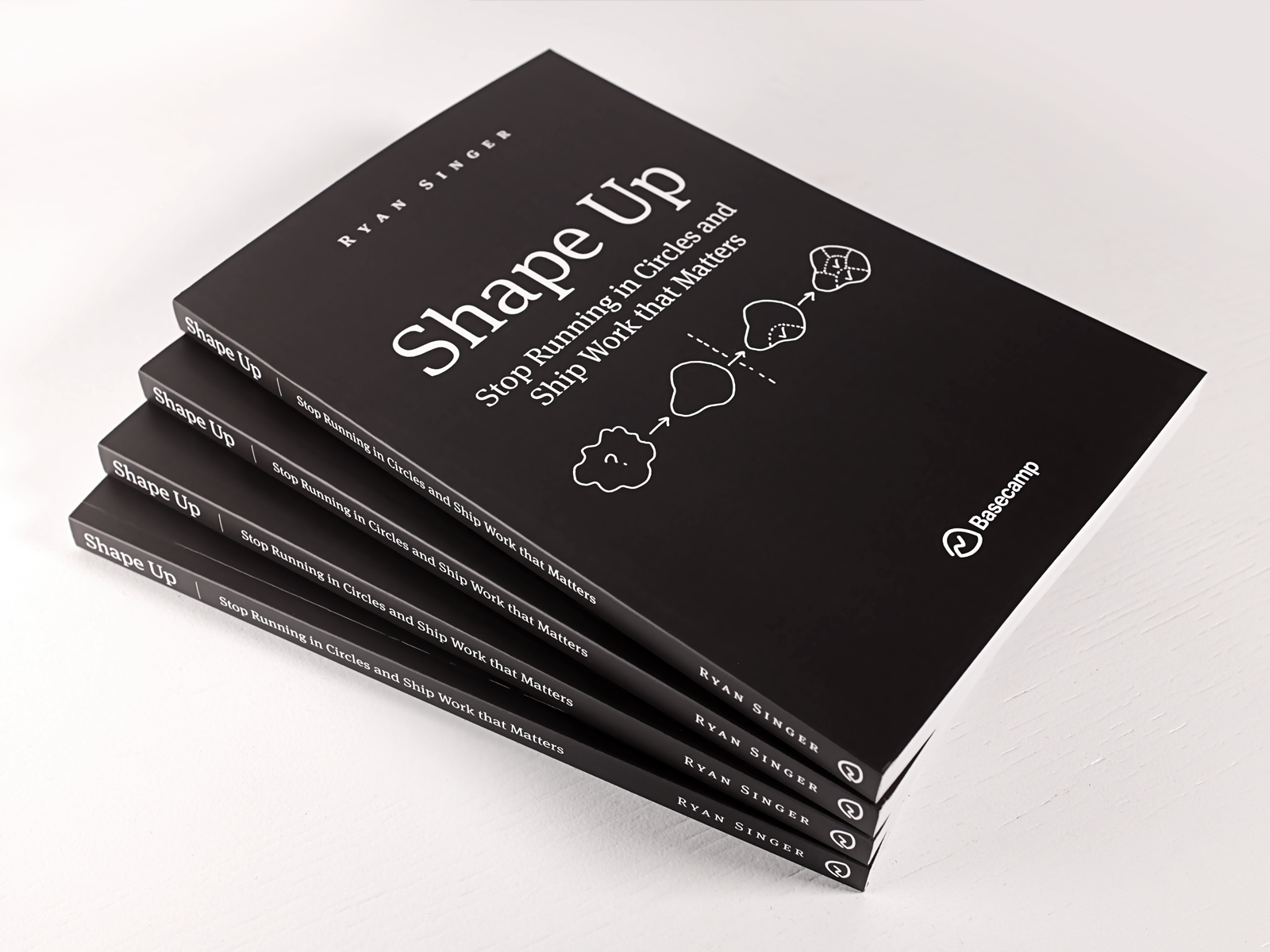

By Michias
October 17th, 2023
Basecamp's Shape Up Recap
Introduction
This week, the class was introduced and explored the Shaping-Up project management approach. Basecamp presented and familiarised Shaping-Up with Ryan Singer, author of "Shape Up - Stop Running in Circles and Ship Work That Matters" Shape-Up emphasizes a concentrated, time-bound methodology for building and delivering software projects through fixed cycles (typically lasting six weeks). During each cycle, the team at hand will commit to following specific instructions in order to complete and release a set of features. The following paragraphs will discuss each of the **four components** that make this approach efficient and yield strong increments at the end of each cycle.
Principles of Shapes (Chapter 2)
In the first step of shaping work, the team should figure out how much time the initial idea of the new feature is worth and how to address the problem. The book, “_Shape Up - Stop Running in Circles and Ship Work That Matters_”, demonstrates the significance of determining the appropriate level of abstraction. On one hand, teams may go straight to wireframes or high-fidelity mockups, which are excessively specific and limit room for creativity. On the other hand, some teams leave projects too vague/abstract, with no one having enough knowledge to make trade-offs. Singer suggests having a combination, outputting in a way that provides **boundaries and flexibility**.
Set Boundaries (Chapter 3)
During the second step, the team will identify how much time and attention the topic merits; often referred to as setting one's ‘appetite’. Within an appetite, Singer reminds teams to be aware that there should be a creative constraint. It is vital to differentiate appetite from estimation. Appetite begins with a number and ends with a design, whereas estimation begins with a design and terminates with a number.
Also in this step, the book discusses problematic projects that include “redesigning” or “refactoring”. In the context of improvements, using suggestive terminology is impossible to figure out what the depth of the improvements entails like, where it starts and where it stops, similar to grab-bags.
Find the Elements (Chapter 4)
In "Finding the Elements", teams should start by using provoking questions to further assist in shaping the prototype and how they plan to apply it such as "How do you get to it?" and "What are the key components or interactions".
As described in the book, Singer advocates that this step can be a fast-paced exploration process employing one of two prototype techniques.
Fat marker sketches are a common option for visual ideas seen in UI/UX implementations. This prototype technique is a board drawing that illustrates the most essential components.
Breadboarding is a familiar concept from electrical engineering that incorporates indicator lights and rotary knobs. The breadboarding approach uses words to identify components and their connections rather than graphics. Observers can then visualize the notion in action and rate the sequence of events.
Both of the prototypes leave reasonable room for creativity so others can provide feedback and suggestions with the proposed prototype.
Risks and Rabbit Holes (Chapter 5)
The main purpose of this step called "Risks and Rabbit Holes", is to analyze the solution and find faulty areas in the solution. As this is time-constraint turnover, any rabbit holes in the shaping, like technical unknowns or misunderstandings could cause the project to take considerably longer to accomplish. To detect rabbit holes and risks, teams should slow down and rigorously examine what they intend to build. The shape-up methodology fosters debates on what is necessary to keep the project well within the appetite.
Another way to find risks is to present them to technical peers. Build the concept from the beginning on a whiteboard, teams should emphasize that they are looking for risks in the idea, showcase their assumptions, declare what is out of bounds and state any situations that the team does not support.
Depending on how the conversation goes, the team may progress to preparing a pitch or need to go to previous steps to further solidify their solution.